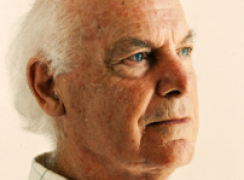Near-death experiences are simply "manifestations of normal brain functions gone awry", researchers say.
Psychologists from Edinburgh University and the Medical Research Council in Cambridge reviewed existing research.They say phenomena such as out-of-body experiences or encounters with dead relatives are tricks of the mind rather than a glimpse of the afterlife.
One of the researchers, Dr Caroline Watt, said: "Our brains are very good at fooling us."
The researchers say that many common near-death experiences could be caused by the brain's attempt to make sense of unusual sensations and perceptions occurring during a traumatic event.
Dr Watt, of the University of Edinburgh, said: "Some of the studies we examined show that many of the people experiencing a near-death experience were not actually in danger of dying, although most thought they were.
"The scientific evidence suggests that all aspects of the near-death experience have a biological basis."
Bliss and euphoria
One of the most frequently reported features of near-death experiences is an awareness of being dead - but the researchers say these feelings are not limited to near-death experiences.
ResearchersTaken together, the scientific experience suggests that all aspects of near-death experience have a neuro-physiological or psychological basis.”
There is a condition called "Cotard" - or "walking corpse" syndrome, where a person believes they are dead. It has been seen following trauma and during the advanced stages of typhoid and multiple sclerosis.
Out-of-body experiences, where people feel they are floating above themselves, are also commonly reported.But Swiss researchers found such experiences could be artificially induced by stimulating the right temporoparietal junction in the brain that plays a role in perception and awareness.
The "tunnel of light" sensation reported by those who believe they are having a near-death experience can also be artificially induced.
Pilots flying at G-force can sometimes experience "hypertensive syncope" which causes tunnel-like peripheral or even central visual loss for up to eight seconds.
And a US study suggested the light at the end of the tunnel can be explained by poor blood and oxygen supply to the eye.
The feelings of bliss and euphoria, meanwhile, can be recreated with drugs such as ketamine and amphetamine.
The paper also suggests the action of noradrenaline, a hormone released by the mid-brain, can evoke positive emotions, hallucinations and other features of the near-death experience.
Writing in the journal Trends in Cognitive Science, the researchers say: "Taken together, the scientific experience suggests that all aspects of near-death experience have a neuro-physiological or psychological basis."
Dr Sam Parnia, director of resuscitation research at the State University of New York and author of What Happens When We Die said: "Every experience, whether near-death or otherwise such as depression, happiness and love is mediated by the brain.
"In fact many experiences share the same brain regions, and so it is not unusual to be able to reproduce them.
"Discovering those areas or reproducing them, doesn't imply the experience is not real. By the same token, we wouldn't say love, happiness and depression are not real.
"Furthermore many people accurately report "seeing" events taking place at a time when the brain doesn't function (such as during cardiac arrest). These cannot be explained by brain changes, since the brain had shut down and 'flatlined'.
"While seeming real to those who experience them, near death experiences provide a glimpse of what it is like to die for the rest of us".
BBC/Health/ New/ October 2011
Blogger Reference Link http://www.p2pfoundation.net/Multi-Dimensional_Science

No comments:
Post a Comment